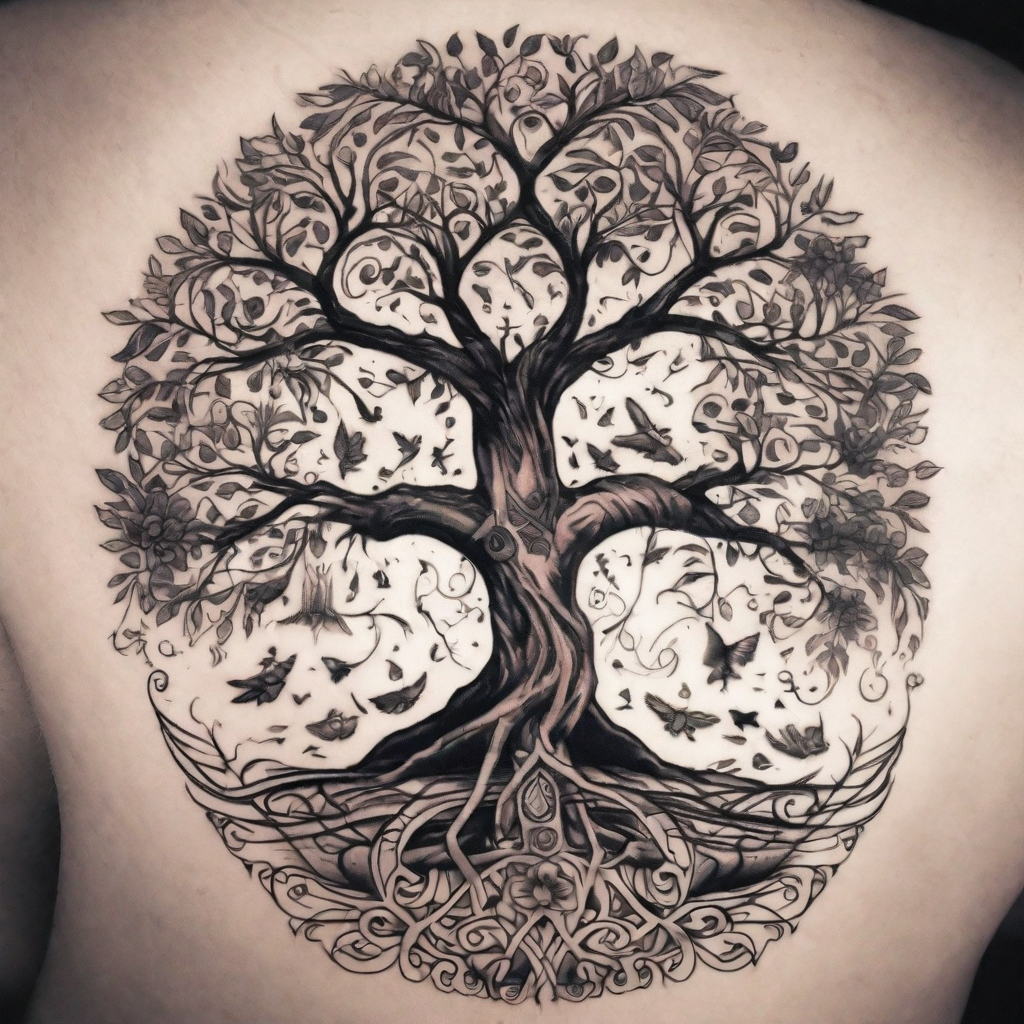The tree of life is a powerful and enduring symbol that has been found in art and mythology across cultures for centuries. Its imagery is deeply evocative, representing life, growth, resilience, and the interconnectedness of all things. This enduring symbol has been interpreted in many different ways depending on the culture and beliefs of the people who use it.
Ancient Origins
The earliest known depictions of the tree of life date back to ancient Mesopotamia, where it was associated with the goddess Ishtar, the deity of fertility and abundance. In this context, the tree of life was seen as a source of life and renewal, symbolizing the cyclical nature of nature and the promise of new beginnings.
Ancient Egypt also embraced the tree of life symbolism, linking it to the god Osiris, the ruler of the underworld and the embodiment of rebirth. The tree of life was seen as a symbol of immortality, representing the ability to transcend death and achieve eternal existence.

In Judaism, the tree of life appears in the Book of Genesis, where it stands as a central feature of the Garden of Eden. This divine paradise is described as a place of perfection and harmony, where the tree of life represents the source of everlasting life and the potential for spiritual enlightenment.
Christian Interpretations
In Christianity, the tree of life has taken on a variety of meanings, often associated with paradise, heaven, and the cross of Jesus Christ. The cross is seen as a symbol of sacrifice and redemption, while paradise represents the ultimate reward for those who follow the teachings of Jesus.
Some Christian traditions also connect the tree of life to the concept of the Trinity, representing the three aspects of God: the Father, the Son, and the Holy Spirit. The tree’s branches reaching towards the heavens symbolize the divine presence, while its roots anchoring it to the earth represent the grounding force of God’s love and guidance.
Celtic and Norse Traditions
Celtic mythology holds the tree of life in high regard, considering it a sacred symbol associated with Druids and shamans. The Celts believed that the tree of life connected the heavens, the earth, and the underworld, forming a bridge between the spiritual and physical realms.
Norse mythology, too, features the tree of life, known as Yggdrasil. This immense cosmic tree serves as the axis of the universe, connecting all nine realms, including the realm of the gods, Asgard. Yggdrasil is home to various gods, creatures, and mythical beings, representing the interconnectedness of all aspects of existence.
Modern Interpretations
The tree of life continues to hold significance in modern society, often appearing in tattoos, jewelry, and other forms of art. People who choose to incorporate the tree of life symbolism often do so to represent their connection to nature, their belief in personal growth, or their spiritual beliefs.
The tree of life’s versatility allows for a wide range of interpretations, making it a meaningful symbol for individuals from diverse backgrounds. It can represent individual strength and resilience, the cycle of life and death, the interconnectedness of all living things, and the pursuit of spiritual enlightenment.
Cultural Variations
The specific meaning of the tree of life can vary depending on the cultural context. For instance, in some cultures, the tree of life represents the balance and harmony between male and female energies, while in others, it symbolizes the cyclical nature of life and the constant renewal that occurs in nature.
Personal Interpretation
Ultimately, the meaning of the tree of life is deeply personal, shaped by individual experiences, beliefs, and cultural influences. It is a symbol that can evoke profound emotions and serve as a reminder of the interconnectedness of all things, the power of personal growth, and the enduring spirit of life itself.
Conclusion
The tree of life, with its rich history and diverse interpretations, remains a powerful and enduring symbol that transcends cultural boundaries. It is a reminder of the cyclical nature of life, the interconnectedness of all things, and the enduring strength that resides within each of us. Whether viewed through the lens of ancient mythologies, religious traditions, or personal beliefs, the tree of life continues to inspire and empower individuals across generations and cultures.